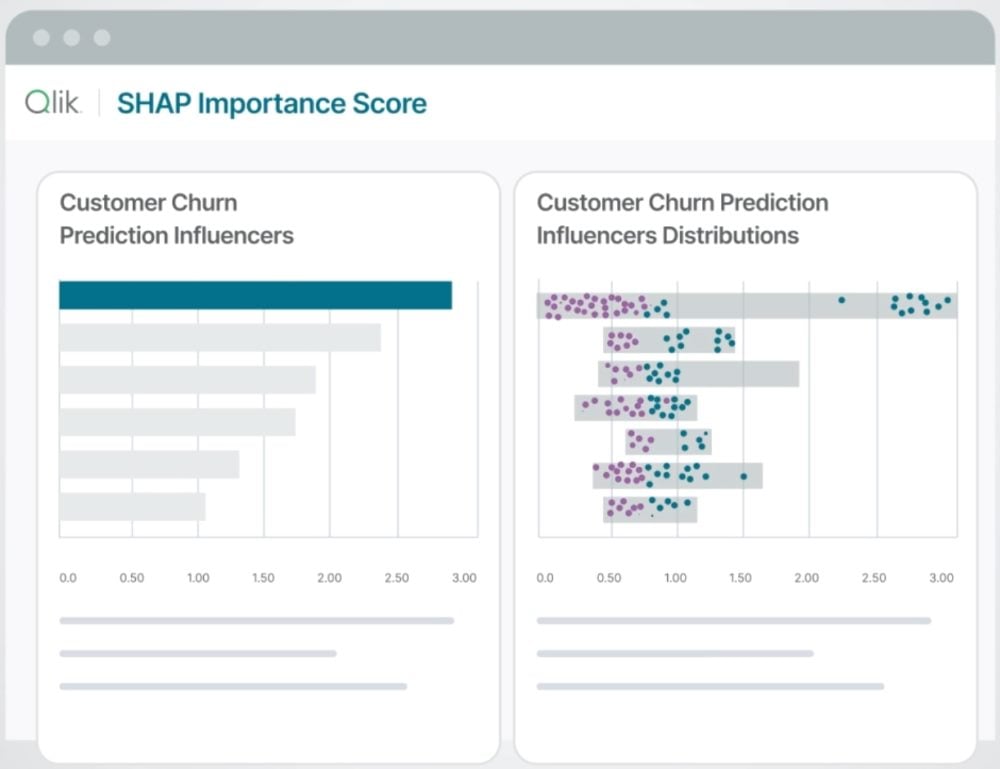The Gist
-
No-code forecasting. Business users gain access to predictive models without coding skills.
-
Operational integration. Enterprises embed forecasts into frontline workflows for real-time decisions.
-
Empowered business teams. Frontline staff and managers benefit from faster, explainable insights to improve outcomes.
Qlik announced the rapid adoption of Qlik Predict, a no-code predictive analytics platform designed for business users. The solution, announced Oct. 1, aims to transform how organizations leverage machine learning by putting predictive models directly in the hands of non-technical staff.
According to company officials, Qlik Predict embeds forecasting capabilities into frontline workflows across industries including manufacturing, healthcare and financial services. The platform is designed to operate at enterprise scale while maintaining governance standards.
Table of Contents
- Impacted Audiences for Qlik Predict
- Market Context: Democratizing Predictive Analytics
- AI: From Promise to Performance
- Key Capabilities of Qlik Predict
- Qlik Background
Impacted Audiences for Qlik Predict
-
Business users without coding expertise
-
IT departments seeking governed AI solutions
-
Frontline decision-makers across industries
Market Context: Democratizing Predictive Analytics
No-code tools are transforming analytics, enabling business users like customer support and service staff to harness predictive capabilities without technical expertise.
Qlik's introduction of Qlik Predict represents the company's expansion into the no-code predictive analytics space. According to company officials, the platform enables business users to utilize machine learning without requiring advanced technical skills.
This launch aligns with the broader trend of democratizing advanced analytics. Tools that were once the domain of large enterprises with deep pockets have become increasingly accessible to smaller businesses and non-technical users. By 2025, Gartner predicts 70% of new applications developed by organizations will use low-code or no-code technologies, up from less than 25% in 2020.
The rise of these platforms is enabling what industry experts call "citizen creators," or employees who can achieve specialist outcomes without specialized training. This democratization allows organizations to expand their innovation base dramatically.
Meanwhile, AI-powered analytics continues to evolve, with tools that can analyze vast datasets to uncover patterns and predict behaviors in real time. However, ROI expectations are measured; a recent Forrester survey found that 49% of U.S. generative AI decision-makers expect returns on AI investments within one to three years.
Related Article: What Is Predictive Analytics? And How it Works
AI: From Promise to Performance
Executives are racing to turn AI from promise into performance where decisions happen hour by hour.
- Brendan Grady, executive vice president and general manager
Qlik's Analytics Business Unit
Key Capabilities of Qlik Predict
According to Qlik, several organizations are already implementing the solution in production environments.
| Capability | Description |
|---|---|
| Code-free modeling | Supports diverse needs across organizations without technical expertise |
| Explainable results | SHAP-based visualizations that update as users explore data |
| Workflow integration | Alerts and what-if scenarios at the point of decision |
| Enterprise governance | IT maintains oversight while business users build models |

Qlik Background
Qlik provides data analytics and business intelligence software, primarily targeting enterprise IT and business leaders.
Analytics Platform
The company offers a suite of products for data integration, visualization and analytics, including its Qlik Sense platform. Its tools enable organizations to aggregate, analyze and share data insights. Qlik asserts that its associative engine allows users to explore data relationships across multiple sources. The company also provides data integration capabilities to support cloud and hybrid environments.
Market Position
Qlik is recognized in the enterprise analytics market, serving industries such as healthcare, financial services and manufacturing. Its typical customers include mid-sized to large organizations seeking to operationalize data-driven decision-making. Industry observers note that the company competes with vendors like Tableau and Power BI. Qlik's offerings are often selected by organizations that require flexible deployment options and advanced data discovery features.
